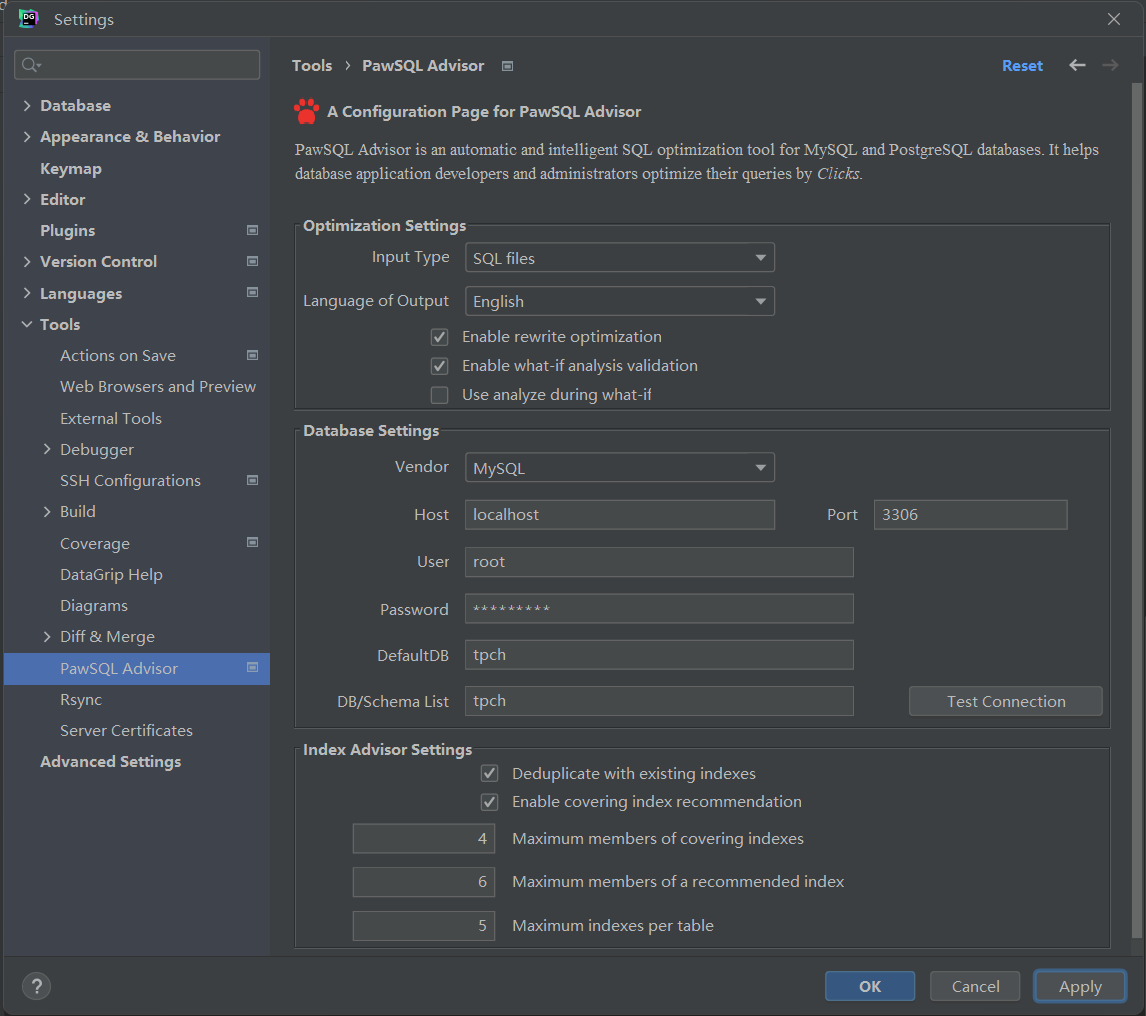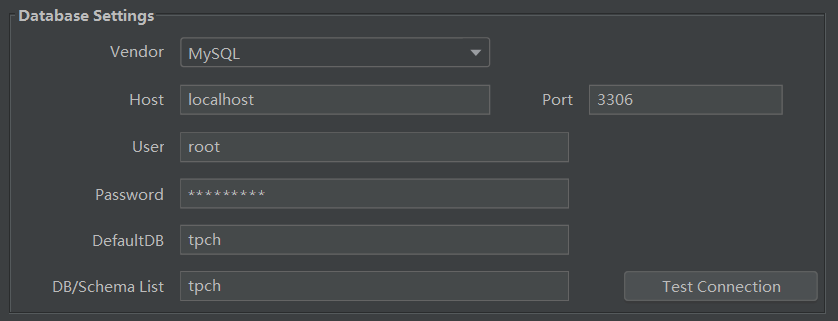2. Configuration
PawSQL Advisor provides a project-level configuration page for input, output, data sources and runtime settings.

2.1 Optimization Settings

- Input Type: SQL file or Mapper file
- SQL files, native SQL file with
;as delimiter - Mapper files, extract SQL from MyBatis mapper files and permutate all possible SQL combinations
- SQL files, native SQL file with
Mapper file input is important for capturing all possible SQL combinations during application development. Note: Unused SQLs may be generated from poorly written mapper files, leading to useless index recommendations.
-
Language of Output: The language used in recommendations, Chinese or English
-
Enable SQL Rewriting: Whether to enable SQL rewriting optimization. Disable to only get index recommendations when unable to modify SQL easily.
-
Enable What-If Validation: Whether to validate the performance of recommended optimizations. By enabling this option, PawSQL provides explain plans and costs before and after optimization for SQLs.
-
Execute SQL for Validation: Whether to execute SQL to get actual execution time instead of relying on imperfect EXPLAIN information.
Cautions: Please be careful when you enable What-If Validation on production databases, as it will create and drop recommended indexes which may impact application performance.
2.2 Database Settings
Database connection is used to:
- Retrieve database objects like tables, views, columns, indexes as context of SQL optimization
- Perform What-If optimization validation

Settings for database include:
- Database Type: MySQL, PostgreSQL, openGauss, Oracle, MariaDB, KingbaseES
- Host : the host address which host the database instance,
- Port: the port of database instance for PawSQL Advisor to connect to
- Username: the user name for PawSQL Advisor to connect to database instance
- Password: the password for PawSQL Advisor to connect to database instance
- Default Database: the default database for PawSQL Advisor to connect to
- Database/Schema List: List of databases (MySQL) or schemas (PostgreSQL/openGauss). Their tables, views, indexes and stats will be used for optimization.
2.3 Index Advisor Settings

- Deduplicate /w Existing Indexes: Whether to deduplicate recommended indexes covered with existing ones. Enable if you only want to add new indexes without dropping existing ones. Disable to replace existing indexes with recommended ones.
- Recommend Covering Indexes: Whether to recommend covering indexes that can satisfy queries purely from the index without accessing the table. Can significantly improve performance but also increase index size by including non-query columns.
- Maximum Columns in Covering Indexes: Maximum number of columns to include in a covering index.
- Maximum Columns in Recommended Indexes: Maximum number of columns in a regular index, to control index size and the depth of an index tree.
- Maximum Indexes per Table: Threshold for warning on excessive indexes per table.